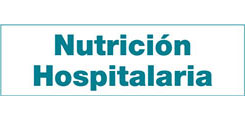Trabajo Original
Consistencies and terminologies – the use of the International Dysphagia Diet Standardization Initiative
Alessandra Salles Machado, Cyntia Hellene dos Santos Moreira, Deuzi Caetano da Silva Vimercati, Tiago Costa Pereira, Denise Coutinho Endringer
 Número de descargas:
42234
Número de descargas:
42234
 Número de visitas:
8070
Número de visitas:
8070
 Citas:
2
Citas:
2
Compártelo:
Introduction: this study aimed to verify the ability of speech therapists to identify, sort and name the different consistencies used in neurogenic oropharyngeal dysphagia (NOD) management, and to compare the results with the terms proposed by the International Dysphagia Diet Standardization Initiative (IDDSI). Methods: this research was approved by the ethics committee. Sixty speech therapists who work with NOD patients sorted 5 commercial foods from thinnest to thickest to match IDDSI levels 0 to 4, and then used a term to designate each consistency. Results: most subjects (76.66%) sorted the foods properly. Terminologies were divergent at all levels. For level 0, practitioners assigned 3 different terms. For level 1, 24 different terms were reported; for level 2 there were 25 terms, 23 terms for level 3, and 18 terms for level 4. Level 0 (IDDSI - thin) was designated by most participants as liquid; level 1 (IDDSI - slightly thick) was referred to as semi-thickened liquid; level 2 (IDDSI - mildly thick) as thickened liquid; level 3 (IDDSI - moderately thick) as honey; and level 4 (IDDSI - extremely thick) as pasty by most subjects. A reduced number of participants used terms in accordance with IDDSI. Level 0 was appropriately named by 5 subjects (8.33%); levels 1, 2 and 4 by 2 practitioners each (3.33%); and level 3 by 1 professional (1.66%). None of the subjects named all 5 IDDSI levels correctly. Conclusion: most practitioners progressed consistencies properly. There was a diversity of terminologies used for the same consistency at all levels, with no standardization.
Palabras Clave: Deglutition. Deglutition disorders. Terminology. Viscosity. Speech therapy.
DOI: 10.1590/1982-021620151754315
DOI: 10.1007/s00455-016-9696-8
DOI: 10.1007/s40141-013-0024-z
DOI: 10.1590/2317-1782/20172016088
DOI: 10.1590/1982-0216201413112
DOI: 10.1590/S1516-80342012000400020
DOI: 10.1590/1982-021620155614
DOI: 10.1007/s00455-011-9325-5
DOI: 10.1111/j.1365-2036.2006.03118.x
DOI: 10.1682/JRRD.2011.09.0180
DOI: 10.1016/j.jand.2013.07.037
DOI: 10.1007/s00455-014-9561-6
DOI: 10.1007/s00455-005-0034-9
DOI: 10.1590/2317-1782/20152015059
DOI: 10.1007/s00455-014-9578-x
DOI: 10.1016/j.fshw.2013.11.002
DOI: 10.1044/leader.FTR3.08202003.16
DOI: 10.1590/S1516-18462011005000145
DOI: 10.15601/1983-7631/rt.v8n14p38-51
DOI: 10.1590/S1516-18462009005000001
DOI: 10.1590/0104-1169.3252.2418
DOI: 10.32811/2595-4482.2018v1n1.36
Artículos Relacionados:
Trabajo Original: Rehabilitación de la alimentación por vía oral en niños con enfermedades respiratorias crónicas y nutrición enteral prolongada
Daniela Angulo , Edson Bustos , Andrés Sánchez , Salesa Barja
Trabajo Original: Perfil espectrográfico de la deglución normal en el adulto
Miguel Antonio Vargas García
Trabajo Original: Assessment of the risk of malnutrition due to aspiration pneumonia and oral feeding difficulty
Shinichi Sato , Hidetoshi Takahashi
Trabajo Original: Cost, microbiological, and nutritional properties of pureed food production in nursing homes. The ABADIA Study
María Dolores Ballesteros Pomar , Javier Pérez-Martín , Maria J Mendiola , José M García-García , Soledad Parrado-Cuesta , Ángel Manuel Caracuel García , Begoña Garcés , Marta Comellas , Héctor D de Paz , Núria Barcons
Trabajo Original: Pilotaje de un protocolo para la adecuación de la forma farmacéutica de la medicación oral al grado de disfagia, de los pacientes ingresados en un servicio de medicina interna
Trabajo Original: Retraso de la adquisición de la succión-deglución-respiración en el pretérmino; efectos de una estimulación precoz
Trabajo Original: Cambios en la viscosidad del agua con espesantes por la adición de fármacos altamente prescritos en geriatría
Trabajo Original: Traducción y validación de la versión en español de la escala EAT-10 (Eating Assessment Tool-10) para el despistaje de la disfagia
Trabajo Original: El menú de textura modificada; valor nutricional, digestibilidad y aportación dentro del menú de hospitales y residencias de mayores
Trabajo Original: Diferencias en la calidad de vida de pacientes con disfagia orofaríngea según el lugar de residencia: impacto en la selección de alimentos y el tipo de dieta
Amaya Peñalva Arigita , Maria Lecha Benet , Anna Sansano Alguero , Rosa Prats Farreras , Aida Gomes Vasquez , Helena Bascuñana Ambrós , Lluis Vila Ballester
Revisión: Características técnicas de los productos alimentarios específicos para el paciente con disfagia
Artículos más populares
Revisión: Inteligencia artificial generativa ChatGPT en nutrición clínica: avances y desafíos
ChatGPT y otras herramientas de inteligencia artif...
Revisión: Suplementación con micronutrientes y sus beneficios: ¿por qué y cuándo?
Introducción: los micronutrientes participan en la...
-
Licencia creative commons: Open Access bajo la licencia Creative Commons 4.0 CC BY-NC-SA
https://creativecommons.org/licenses/by-nc-sa/4.0/legalcode




